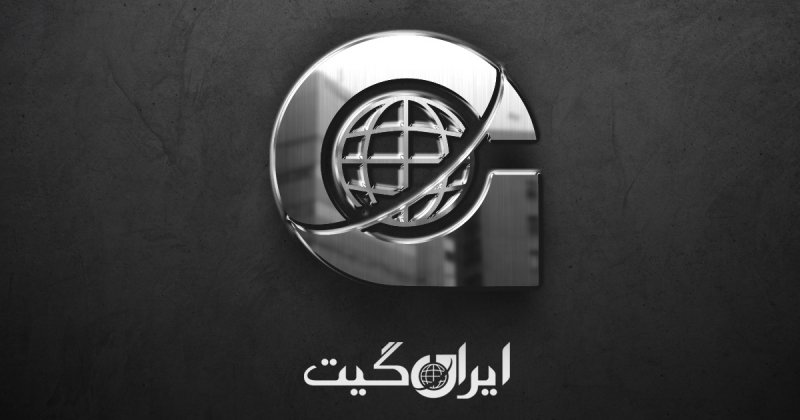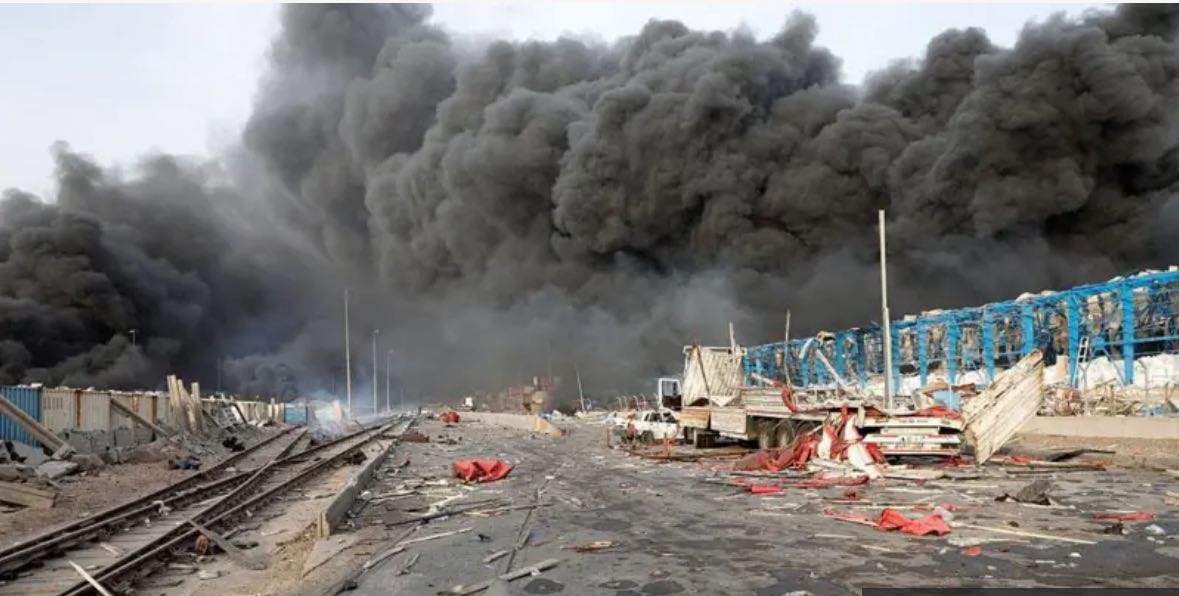Let’s get to know the cause of the Bandar Abbas disaster
Let’s get to know the cause of the Bandar Abbas disaster
On the afternoon of Saturday, April 25th, a massive and deadly explosion shook the Rajaee port, the largest export port of Iran, located west of the city of Bandar Abbas in southern Iran.
Huge flames that could be seen from kilometers away quickly created a wave of concern and speculation, and the orange smoke that rose into the air before the explosion brought forth various theories about the cause of this incident.
Officials say the cause of the incident is under investigation, but they have emphasized negligence and serious lapses as the primary reasons for this incident. Masoud Pezeshkian, the President of Iran, also criticized the long-term storage of 120,000 to 140,000 containers at this port and the current state of port management in the country, promising to investigate the causes of the incident and foresee preventive measures. Initial evidence of the explosion, especially the observation of orange smoke, has strengthened speculations about the role of the chemical substance ammonium nitrate in this incident.
Andrea Sella, a professor of inorganic chemistry at University College London, said seeing the orange smoke and the type of fire are strong indicators of the presence of nitrate compounds, especially ammonium nitrate. This substance has repeatedly played a role in similar disasters, and its behavior is familiar to us. What is ammonium nitrate, why can it be so dangerous, and is there any connection between this substance and weapons or military equipment?
What is ammonium nitrate?
Ammonium Nitrate, with the chemical formula NH₄NO₃, is a chemical compound with a crystalline structure.
In its normal state, this substance is solid and white or colorless, easily absorbing moisture from the air and dissolving in water. The primary use of ammonium nitrate is as a nitrogen fertilizer in agriculture. It is considered one of the most effective sources for plant growth and is produced and consumed on a large scale globally. However, Siad Farhadi, the head of the Iranian Chemical Fertilizer Producers Association, told Mehr News Agency that ammonium nitrate is not allowed for agricultural use in Iran due to its explosive properties.
According to Mr. Farhadi, this chemical is not allowed to be imported, and the small amount produced domestically is under the supervision of the Ministry of Defense. He says that in Iran, ammonium nitrate is mostly used in the military sector, with some also used in the mining sector. Andrea Sella states that if ammonium nitrate is not stored correctly and is placed in conditions leading to an explosion, it can cause disasters like the Beirut port explosion in 2020, which resulted in over 220 deaths.
How does ammonium nitrate cause explosions?
Ammonium nitrate is stable under normal conditions and does not have explosive properties. However, if exposed to extreme heat or combined with organic materials containing carbon, it can become highly prone to explosion. The explosion process begins with the thermal decomposition of this substance, leading to the release of hot, high-energy gases such as nitrogen, water vapor, and nitrogen oxides.
Professor Sella told the BBC that one of the characteristics of ammonium nitrate is its sensitivity to high temperatures. When this substance is heated, it first melts and, if the temperature continues to rise, it begins to decompose. If this happens in a confined space, the risk of explosion increases significantly. Additionally, ammonium nitrate has a strong tendency to absorb moisture from the air, which in unsuitable conditions can increase the risk of fire or explosion.
The air temperature on the day of the incident in Bandar Abbas was reported to be 42 degrees Celsius.
Although this level of heat cannot raise ammonium nitrate to the thermal decomposition and explosion temperature of above 210 degrees Celsius, it can have indirect risks and consequences. For example, high humidity can cause this substance to clump together, making storage conditions more difficult, and high ambient temperatures can accelerate chain reactions and the spread of fire.
Mr. Sella concludes that the existing evidence, including the intensity and pattern of the explosion at Rajaee port, largely aligns with explosions related to ammonium nitrate.
He says the explosion, whose wave extended for kilometers, broke windows, threw people, and destroyed containers, is quite familiar and has happened in the past.
Applications of ammonium nitrate in industry, agriculture, and military production
Ammonium nitrate is primarily used as a fertilizer in agriculture, but its role in other industries is also significant. In mining and construction projects, ammonium nitrate is used as a raw material for producing industrial explosives.
This compound is widely used for controlled explosions and mineral extraction.
On the other hand, the use of ammonium nitrate is sometimes considered in military and armament projects, although, according to Professor Sella, ammonium nitrate does not typically have a primary application in rocket fuels due to its sensitivity to moisture and heat.
He says in rocket fuel production, more stable compounds like ammonium perchlorate are preferred.
Following the Rajaee port explosion, some speculations arose about the possible connection of this incident to ammunition or military explosive materials. According to some reports, it was speculated that rocket fuels or military explosive materials were stored at the site of the incident.
Mr. Sella cautiously comments on this matter, stating that from a scientific perspective, the orange smoke seen in the videos aligns more with ammonium nitrate than with substances like sodium perchlorate or ammonium perchlorate.
He explains that perchlorates are usually used in military rocket fuels and have their own specific signs.
According to him, if perchlorates were the cause of the explosion, we would expect to see different signs in the smoke and flames.
Nevertheless, a more detailed examination of the explosion site, sampling of the soil, and remaining materials can determine exactly what substances played a role in this explosion.
Deadly ammonium nitrate explosions worldwide
Ammonium nitrate is a familiar name in the history of industrial disasters. Some of the most significant of these incidents include:
Beirut, Lebanon 2020: The explosion of 2,750 tons of ammonium nitrate, which had been stored at the Beirut port for years without safety measures, resulted in over 220 deaths, thousands of injuries, and widespread destruction in the capital of Lebanon. Tianjin, China 2015: An explosion at a warehouse containing ammonium nitrate in the Tianjin industrial area led to the death of 173 people and extensive damage. Neyshabur, Iran 2004: The derailment and explosion of a train carrying chemical materials, including ammonium nitrate, near Neyshabur resulted in the death of over 320 people and marked one of the deadliest railway incidents in modern history. Texas City, USA 1947: The SS Grandcamp ship, carrying 2,300 tons of ammonium nitrate, caught fire, and its explosion led to the death of over 580 people and the destruction of a large part of the city. Tessenderlo, Belgium 1942: During an attempt to separate a heap of 150 tons of ammonium nitrate with industrial explosives, an explosion occurred, killing 189 people and injuring about 900. Oppau, Germany 1921: An explosion at a chemical fertilizer factory containing ammonium nitrate resulted in over 500 deaths and the destruction of a large part of the city.
How can similar disasters be prevented?
Given the essential role of ammonium nitrate in industry and agriculture, its complete elimination is not possible, and therefore, the safe management and storage of it become very important.
Safe storage and separation: Ammonium nitrate should be stored in fire and moisture-resistant warehouses with proper ventilation. The volume of materials should be limited and separated into smaller units to prevent chain reactions during a fire.
Preventing contact with flammable materials: Contact between ammonium nitrate and fuels, oils, or organic fertilizers can significantly increase the risk of explosion. Advanced fire detection and extinguishing systems: Ammonium nitrate warehouses should be equipped with precise fire detection systems to take immediate action in the early stages of a fire. The materials used to extinguish the fire should be chosen according to the characteristics of ammonium nitrate, as some may exacerbate the fire.
Training, supervision, and enforcement of regulations: All related personnel should receive specialized training on the handling, storage, and emergency response to ammonium nitrate, and warehouses should undergo independent, periodic, and strict inspections.

